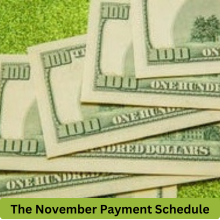
If you’re an SSI recipient, November is about to bring a bit of a surprise—specifically, two checks instead of the usual one. But before you get too excited, there’s a catch you need to know about. Understanding the nuances of your Supplemental Security Income (SSI) payments is crucial for effective budgeting and financial planning, especially with the upcoming changes. So, what’s really happening in November?
What is Supplemental Security Income (SSI)?
Definition and Purpose
Supplemental Security Income (SSI) is a program designed to provide financial support to individuals who have limited income and resources. This includes people who are aged 65 or older, those who are blind, or individuals with qualifying disabilities—yes, this includes children with disabilities too. The program aims to help beneficiaries cover basic needs such as food, clothing, and shelter.
Typical Payment Schedule
Usually, SSI benefits are disbursed on the first business day of each month. This system allows recipients to plan their finances around a predictable schedule, making it easier to manage their monthly expenses. But as you’ll soon find out, November’s schedule deviates from the norm.
The November Payment Schedule
Dual Payments in November
Here’s where it gets interesting: in November, SSI recipients will receive two checks. The first payment will be issued on November 1 as usual, and then a second check will arrive on November 29. This second payment counts for December, which means there won’t be any payment in December itself.
No Payment in December
So, why is this happening? The catch here is that since December 1 falls on a Sunday this year, the Social Security Administration (SSA) has to adjust the payment schedule. Recipients will receive two checks in November but none in December. This means that while it seems like a financial boon initially, you’ll need to stretch those two payments across two months.
The Reason Behind the Schedule Change
Payment Processing Rules
Payment schedules can be affected by weekends and holidays. The SSA has established rules for how payments are processed when the first of the month lands on a non-business day. In this case, to ensure that beneficiaries don’t miss out on their payments, they’ll receive December’s check early in November.
Historical Context
This isn’t the first time SSI recipients have experienced this pattern. Similar scenarios occurred earlier this year, where beneficiaries received two payments in August but none in September. It’s a recurring theme that can catch people off guard, emphasizing the need for proactive budgeting.
Also read: Biltmore Estate Reopens Nov. 2: Celebrate the Holidays Again
Financial Implications for SSI Recipients
Budgeting for Two Payments
Receiving two payments in one month can seem like a windfall, but it’s essential to plan accordingly. Think of it as a double-edged sword—while you have more money coming in, you’ll need to make that last until January.
Here are some tips for managing this unique payment structure:
- Create a detailed budget: Break down your expected expenses for both November and December.
- Prioritize essential costs: Focus on necessities like rent, groceries, and bills before spending on non-essentials.
- Consider a savings buffer: If you have the means, try to save a small portion of your first check to carry you through December.
Preparing for the Gap
It’s not just about getting two checks; it’s also about surviving the payment gap in December. Having a plan in place will make this easier:
- Track your spending: Use apps or simple spreadsheets to monitor where your money goes.
- Explore local resources: Check if community programs can assist with food or other essentials during December.
Regular Social Security Payments
Who Is Affected?
It’s crucial to note that this schedule affects only SSI recipients. If you’re receiving regular Social Security retirement benefits, your payments will continue as scheduled. The SSA distributes these payments based on your birth date:
- November 13: Birth dates between the 1st and 10th
- November 20: Birth dates between the 11th and 20th
- November 27: Birth dates between the 21st and 31st
Also read: Trump Shocks Fans at Jets vs. Steelers NFL Showdown
Conclusion
So there you have it—two SSI checks in November, but with a catch of no payment in December. While it may initially seem advantageous, effective budgeting is key to managing your finances during this unique situation. Remember, being prepared can help alleviate the stress of financial gaps. So, stay informed and make those two checks work for you!
FAQs
Why are SSI payments changing in November?
The changes occur due to the first of December falling on a Sunday, prompting an adjustment in the payment schedule.
How often do SSI recipients receive checks?
SSI payments are typically issued once a month, on the first business day.
What should I do if I have trouble budgeting for the gap?
Consider tracking your spending, prioritizing essential expenses, and exploring community resources for assistance.
Will this payment pattern happen again in the future?
Yes, this pattern may repeat in the coming years, so staying aware of the calendar is important.
How does the SSA determine payment dates?
Payment dates are based on set rules concerning weekends and holidays, ensuring recipients receive their funds in a timely manner.

